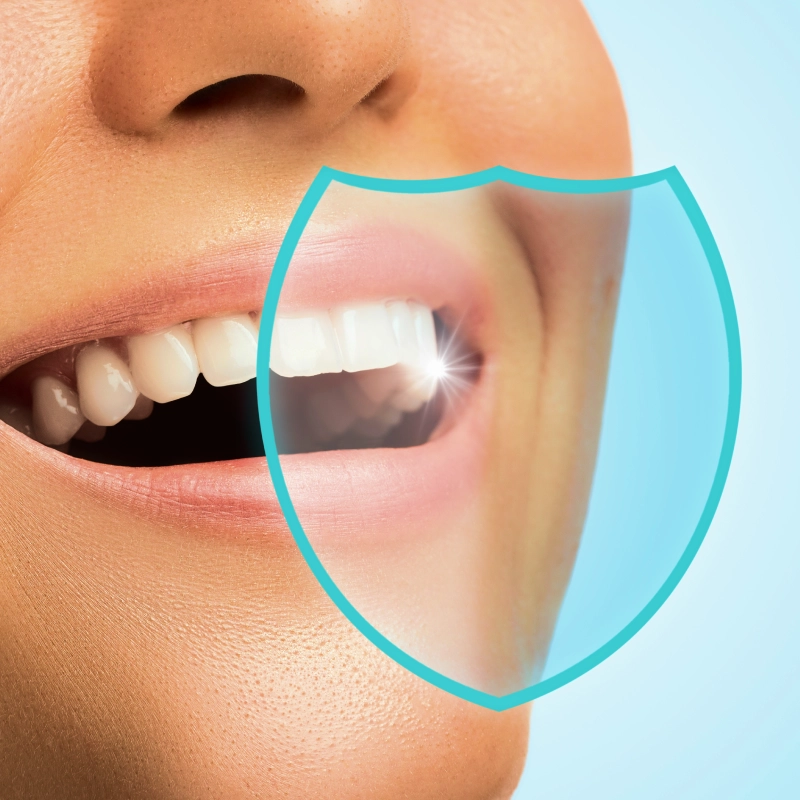
The gleam of a healthy smile is often attributed to pearly white teeth, but the real hero behind that glistening surface is the hard, mineralized layer called enamel. It acts as the teeth's first line of defense against the constant bombardment of acids, sugars, and bacteria that threaten our oral health. And protecting this crucial shield is where fluoride toothpaste plays a starring role.
So, how exactly does fluoride impact enamel, and why should it be a staple in your dental care routine? Let's delve into the science behind this essential ingredient.
Understanding Enamel and Fluoride
Enamel, the hard, outer layer of your teeth, is made up of minerals like calcium and phosphate. These minerals are constantly under attack from acids produced by plaque bacteria, leading to demineralization and, ultimately, cavities. This is where fluoride steps in.
Fluoride is a naturally occurring mineral that can be found in water, food, and, of course, toothpaste. When it comes into contact with your teeth, it does two key things:
- Remineralization: Fluoride helps to rebuild lost minerals in your enamel, strengthening it and making it more resistant to acid attacks.
- Acid Resistance: Fluoride also incorporates itself into the enamel structure, making it less susceptible to demineralization in the first place.
The Benefits of Fluoride Toothpaste
The evidence for the benefits of
fluoride toothpaste is overwhelming. Studies have shown that it can:
- Reduce cavities by up to 80%
- Reverse early-stage demineralization
- Strengthen tooth enamel
- Protect against gum disease
In fact, the American Dental Association (ADA) and the World Health Organization (WHO) both recommend using fluoride toothpaste for optimal oral health.
Dental Fluorosis Treatment
Dental fluorosis is a condition that occurs when the enamel of the teeth is exposed to too much fluoride during their development, leading to cosmetic concerns such as discoloration and, in severe cases, structural issues. The treatment for dental fluorosis varies depending on the severity of the condition. Here are some common approaches:
- Microabrasion: This is a minimally invasive procedure where a dentist removes a thin layer of enamel using an acidic abrasive compound. Microabrasion is often effective for mild to moderate fluorosis stains.
- Teeth Whitening: Professional teeth whitening procedures, such as in-office bleaching or take-home whitening kits prescribed by a dentist, can help improve the appearance of discolored enamel. However, teeth whitening may not be suitable for severe cases of dental fluorosis.
- Dental Bonding: For moderate cases, dental bonding may be recommended. In this procedure, a tooth-colored resin is applied to the affected teeth and then shaped and polished to match the surrounding teeth.
- Veneers: In more severe cases, where the discoloration is extensive, porcelain veneers may be considered. Veneers are thin shells of porcelain that are custom-made to cover the front surface of the teeth, improving their appearance.
- Crowns: For cases of severe dental fluorosis with structural damage, dental crowns may be recommended. Crowns cover the entire tooth and can restore its shape and function.
The Enamel Erosion Concerns
While the benefits of fluoride are undeniable, there are some concerns about its potential to erode enamel, especially in high concentrations. This is particularly true for children under the age of 8, whose enamel is still developing.
However, it's important to note that:
- The amount of fluoride in toothpaste is strictly regulated by health authorities.
- The benefits of fluoride far outweigh the potential risks, even for children.
- To minimize any potential risks, it's important to supervise young children's brushing and ensure they don't swallow the toothpaste.
Choosing the Right Fluoride Toothpaste
With a variety of fluoride toothpastes available, choosing the right one can be confusing. Here are some tips:
- Concentration: For adults, look for toothpastes with 1,000-1,500 ppm (parts per million) of fluoride. For children under 8, a toothpaste with 500 ppm is recommended.
- Formulation: Consider fluoride toothpastes with stannous fluoride, which has been shown to be more effective in remineralizing enamel.
- Abrasiveness: Choose a toothpaste with a low Relative Dentin Abrasivity (RDA) to avoid scratching your enamel.
Embrace the Fluoride Force
When it comes to protecting your teeth, fluoride toothpaste is a powerful ally. While there are some minor concerns, the benefits far outweigh the risks. By choosing the right toothpaste and practicing good oral hygiene habits, you can keep your smile sparkling for years to come.
Remember
- Consult your dentist for personalized advice on choosing the right fluoride toothpaste for you and your family.
- Maintain a balanced diet and limit sugary foods and drinks to further protect your enamel.
- Schedule regular dental checkups for professional cleaning and cavity detection.
So, the next time you reach for your toothbrush, remember proper brushing and flossing remain key partners in this journey for
optimal oral health. With a little knowledge and a healthy dose of brushing, you can ensure your enamel stays strong and your smile stays bright! And if you're ever in need of expert guidance or a sparkling checkup, remember the friendly team at Sakra World Hospital is always here to support you on your path to oral wellness. The advanced facilities and experienced dentists can provide comprehensive care, from routine cleanings to specialized treatments, ensuring your smile receives the attention it deserves.

